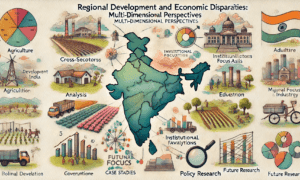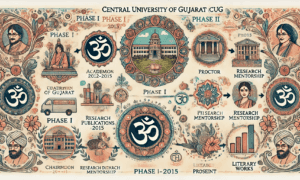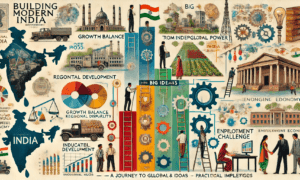The Big Question Where does innovation happen in India? More specifically, which regions and states are leading India’s patent race, and what makes some places more innovative than others? This exploration reveals fascinating patterns about how location shapes technological progress in one of the world’s largest economies.
The Innovation Map: Three Power Centers Imagine India’s innovation landscape as a heat map. Three regions shine particularly bright:
- Western Powerhouse: Leading the pack with 38% of all patent applications
- Southern Stars: A rising force claiming 29% of patents
- Northern Hub: Contributing 24% of innovations
But the most striking finding? Just two states – Delhi and Maharashtra – generate over half of India’s patent applications. It’s like having two innovation capitals in a nation of 28 states.
The Urban Innovation Effect Cities emerge as the true champions of innovation. Think of them as innovation reactors where several critical elements combine:
- Dense networks of skilled professionals
- Proximity to research institutions
- Access to markets and resources
- Knowledge spillover effects
What Makes an Innovation Hotspot? The research reveals five key ingredients that make some regions more innovative than others:
- Knowledge Foundation
- Previous innovation success breeds future breakthroughs
- Existing patent portfolio attracts more innovation
- Creates self-reinforcing cycles of innovation
- Market Magnetism
- Larger local markets drive innovation
- More customers = More incentive to innovate
- Competition spurs technological advancement
- Brain Power
- Higher education enrollment correlates with patent activity
- Universities act as innovation catalysts
- Skilled workforce enables technological advancement
- Institutional Infrastructure
- Research institutions
- Technical universities
- Professional colleges
- Knowledge sharing networks
- Urban Advantage
- Cities provide critical mass for innovation
- Better infrastructure supports R&D
- Closer industry-academia linkages
The Policy Playbook For regions aiming to boost their innovation credentials, the study suggests several strategic moves:
- Market Development
- Help local firms reach national markets
- Create supportive business environment
- Reduce market access barriers
- Talent Pipeline
- Increase higher education enrollment
- Reduce dropout rates
- Improve education quality
- Knowledge Infrastructure
- Invest in research institutions
- Support university-industry collaboration
- Create innovation clusters
- Urban Planning
- Develop tier-II cities
- Improve urban infrastructure
- Create innovation zones
- Industrial Strategy
- Focus on technology-intensive sectors
- Promote industrial clusters
- Support knowledge-sharing networks
Looking Ahead: The Innovation Challenge The study highlights a crucial insight: successful innovation ecosystems require a holistic approach. It’s not enough to focus on just R&D or education – regions need to build complete innovation ecosystems that combine markets, talent, institutions, and infrastructure.
Key Takeaways
- Innovation in India shows strong regional concentration
- Urban areas are critical innovation drivers
- Multiple factors contribute to innovation success
- Policy interventions need to be comprehensive
- Regional innovation requires long-term ecosystem building
Academic Abstract:
Regional analysis of knowledge creation activities in emerging economies like India is continued to be inadequate. This paper discusses the ways in which sub-national and regional factors can affect patenting activities and examines their empirical role in the case of India. The the regional profiles of domestic patenting activities in India is observed to considerably concentrated over space. West India, North India and South India turn out to be the three most dynamic and dominating sub-national spaces in Indian domestic patenting throughout the period 1990-2010. At the state level, more than half of the number of patent applications originated from just two states, namely Delhi and Maharashtra. Empirical analysis further underscored that Indian states’ patenting activities are largely shaped by the size of local markets, availability of skilled labour force, knowledge institutions and urban centres.
Learn More:
Full citation: Pradhan, Jaya Prakash (2014), ‘The Geography of Patenting in India: Patterns and Determinants’, Metamorphosis: A Journal of Management Research, 13(2), pp.29–43, Publisher: IIM Lucknow.
Learn More:





































